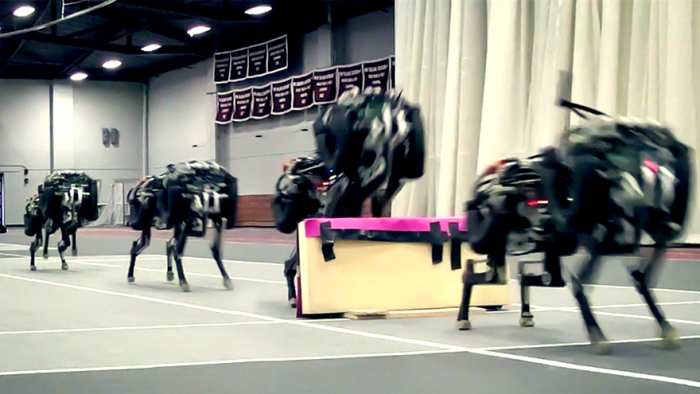
This dog-like machine is the brainchild of Korean mechanical engineer and professor at Massachusetts Institute of Technology, Sangbae Kim. It is called the MIT Cheetah and it is currently in development as one of the world’s first independently agile robots.
Taking inspiration from the way that cheetahs achieve their speed (this robot’s maximum running speed is nowhere near that of its biological counterpart yet), these engineers hope to create a machine that can act as a first responder in emergency situations to keep human rescuers out of harm’s way.
The robot is meant to be able to run and traverse uneven terrain independently. It can sense hurdles via built-in cameras and jump over them as it runs. Once the robotic cheetah’s agility has been perfected, engineers hope to enable it to perform more intricate tasks such as opening stuck doors, breaking through weakened walls or closing gas valves to clear the way for survivors inside a damaged building, for instance.
Kim spoke to the MIT News Office about the initial motivation behind the MIT Cheetah as a rescue-bot and said, “Say there are toxic gases leaking in a building and you need to close a valve inside, but it’s dangerous to send people in. Now, there is no single robot that can do this kind of job. I want to create a robotic first responder that can potentially do more than a human and help in our lives.”
He added, “I imagine a robot that can do some physical, dynamic work.”
Kim and his team of engineers have been working on the robot since 2009. After establishing his own Biomimetic Robotics Lab at the institution during that year, he started researching examples in nature that could help him realise his vision of a quadrupedal robot that can be used to save lives in dangerous scenarios.
“We chose the cheetah because it was the fastest of all land animals, so we learned its features the best, but there are many animals with similarities [to cheetahs],” Kim said, “There are some subtle differences, but probably not ones that you can learn the design principles from.”
Sangbae Kim was born in Seoul, South Korea. He studied mechanical engineering at Yonsei University in the same city before furthering his studies at Stanford University in America. He has been teaching a class at MIT called Bioinspired Robotics since 2013.
See the MIT team and the robotic cheetah in action in the video below.






